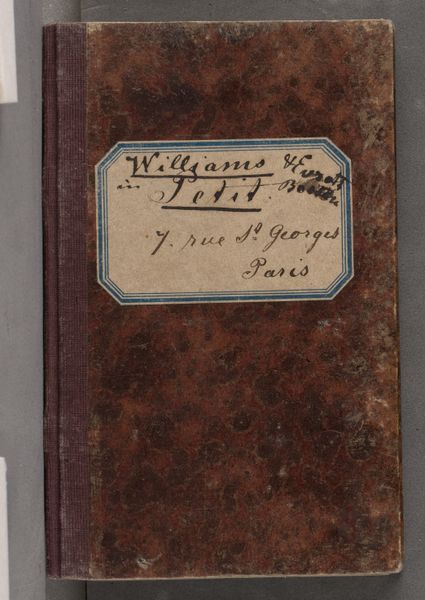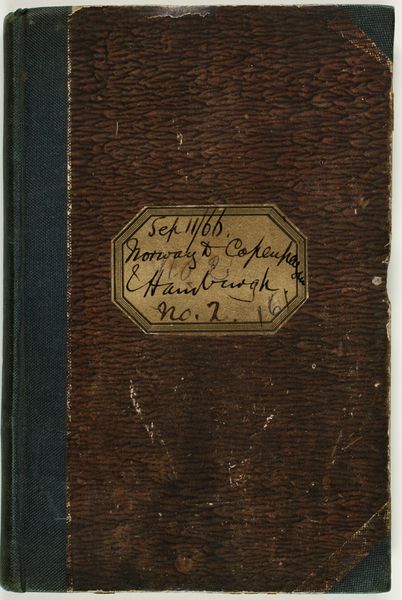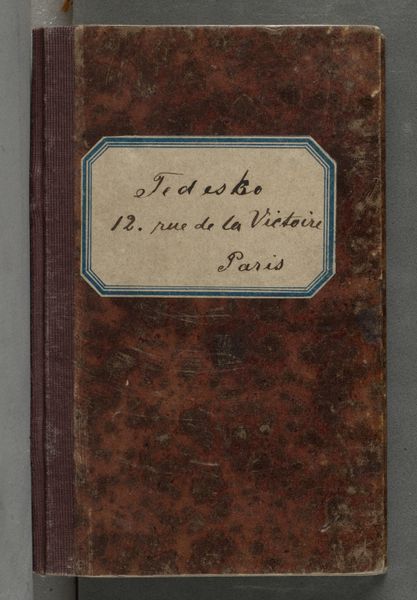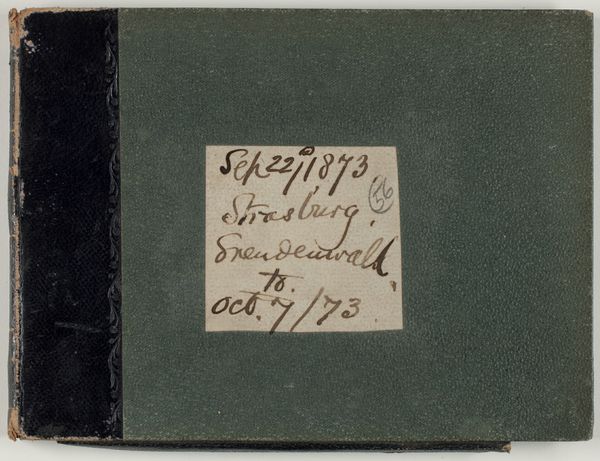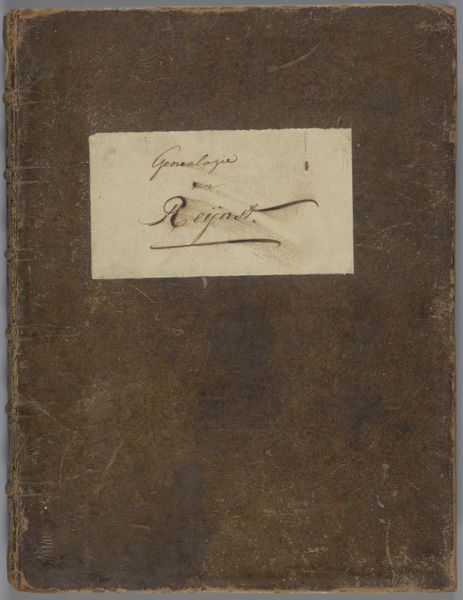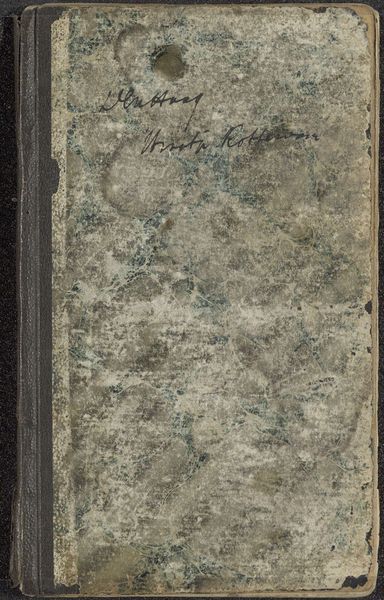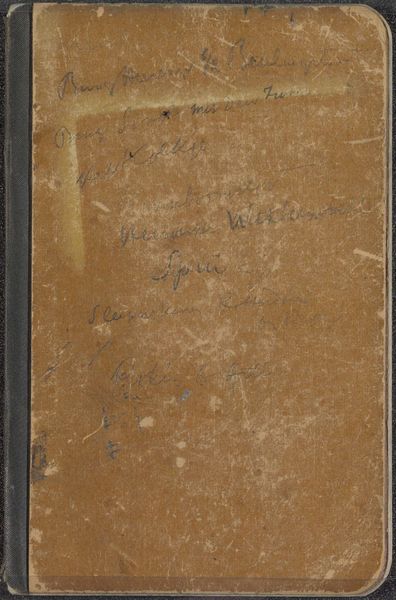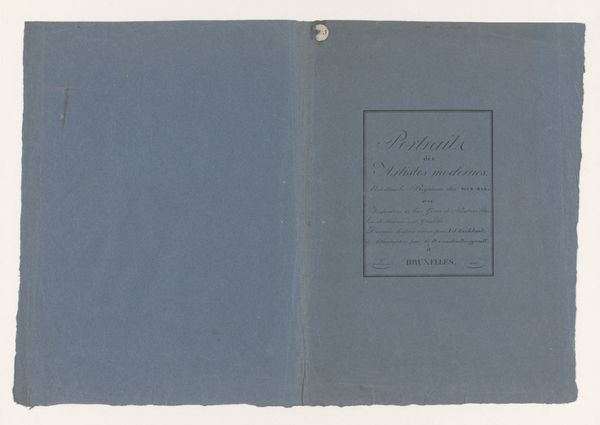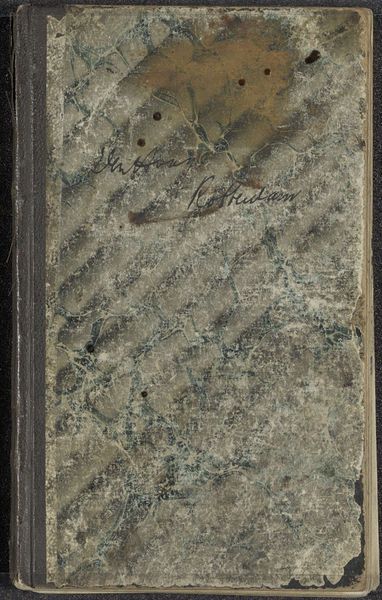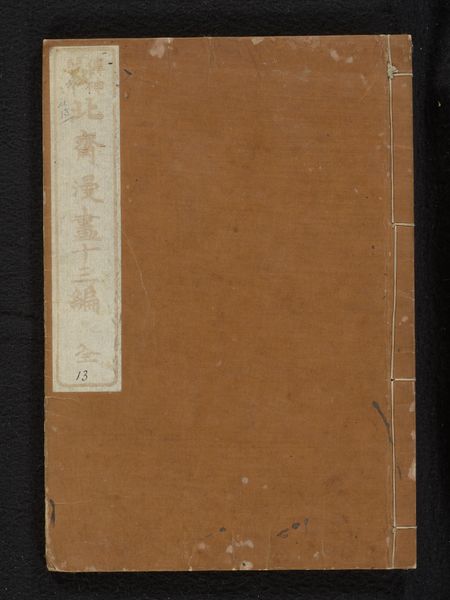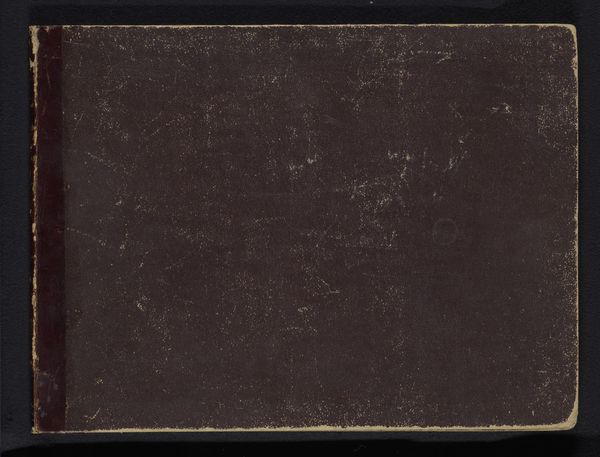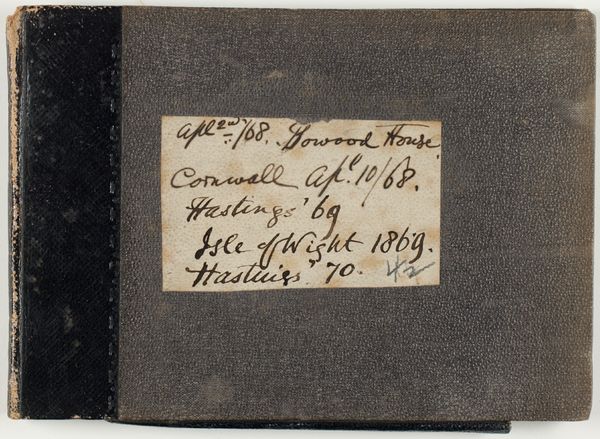
Verzeichnis der Werke für Samuel Putnam Avery, New York 1868 - 1874
0:00
0:00
Copyright: Public Domain
Curator: Let's turn our attention to this intriguing piece: "Verzeichnis der Werke für Samuel Putnam Avery, New York" by Adolf Schreyer, created between 1868 and 1874. It's a mixed-media drawing on paper. Editor: My first impression is one of quiet preservation, it has an aged surface with an almost fossilized appearance. Curator: That sense of preservation is apt. Schreyer, deeply embedded in the Romanticism movement, utilizes symbols of transience and impermanence. Looking closely, we notice the carefully rendered label mentioning "Avery" and his New York address, framing it as an object destined to journey through the city’s socio-economic strata. How does this resonate with the Romantic era? Editor: I see in Avery's inscription the hallmarks of rising industrialists acquiring art in their expanding cities. There is, to my eye, a clear ambition to solidify legacy. A certain degree of consumerism intertwines here with fine art as Schreyer places Avery in an era that lionizes the "conquest" of beauty in nature, art, and wealth. What implications can this have? Curator: Exactly! The historical context is crucial. Avery, a prominent art collector and dealer, would have seen this as an indication of social mobility. However, if you step back and examine the history, the creation and consumption of art served as tools of inclusion and exclusion. Think of women who could not participate fully, whose lives did not count the same way as white men’s. In that era of social and class identity, we must view Avery and Schreyer not simply as connoisseurs of beauty, but participants in an art ecosystem fraught with injustice. Editor: Your viewpoint adds a valuable critical dimension. While Schreyer’s masterful pencil and colored pencil evoke an era of empire and industrial progress, those colors might symbolize not only naturalism but also a more poignant psychological dimension tied to industrial capitalism, don’t you agree? Curator: Absolutely, by highlighting art in connection to identity politics and historical injustices, we broaden access to different interpretive lenses of seeing beauty and meaning. Editor: This artwork has definitely proven to be an excellent portal to question and see both societal and symbolic dimensions!
Comments
stadelmuseum about 2 years ago
⋮
Among the approximately 120 sketchbooks kept in the Städel Museum, Adolf Schreyer’s eight little books occupy a special position (Inv. SG 3080 to SG 3087). Unlike the other artists represented in the collection, who used their books on journeys and hikes or in their studios to record what they had seen and prepare compositions, Schreyer used his books as sales and work catalogues. In them, he listed the key data of completed transactions and documented his own works, which he had sent to various art dealers ‒ purely for personal reference.In seven of the eight books, Schreyer recorded in the 1860s and 1870s only those works that were for sale at a particular art dealer. To this end, he sketched out his own compositions and made brief notes on the information about the works and sales. In addition to the work for the New York-based Samuel Putman Avery, to which this book was dedicated, there are such directories for also in New York based William Schaus (SG 3083), the London-based Ernest Gambart (SG 3080), the Berlin-based Rudolph Lepke (SG 3082), the Paris-based dealers Goupil & Cie (SG 3081), Tedesco (SG 3084) and François Petit (SG 3085) as well as the Boston-based Williams & Everett (also SG 3085). In keeping with Schreyer’s specialisation in depictions of horses and riders in mainly Eastern European and North African landscapes, the compositions sketched in the seven books show exclusively riders ‒ Cossacks, Walachians, Arabs etc. ‒ on horses or in sleighs and carriages drawn by horses.In an eighth book, Schreyer listed more than 600 works which he sold over a period of nearly four decades to private individuals, art associations and various gallery owners, including most of the art dealers mentioned above (SG 3087). Although he did not make any sketches of the pieces he included in this comprehensive book of sales, the titles of the works reveal that most of them were also depictions of riders.Schreyer used the sales book with the paintings to Samuel Putman Avery to record a total of twelve works, which he delivered to the New York dealer between 1868 and 1874. As mentioned above, he drew reproductions of the sold compositions in pencil and noted the year and usually the month of sale as well as a descriptive short title above his sketches. Repeatedly, he also noted the dimensions of the respective painting. He rendered his compositions with quick and confident strokes, sometimes more or less simplified, but generally realised his drawings sufficiently to give a fairly accurate idea of the painting in question. Often, he also briefly noted the weather or time of day.This procedure enabled Schreyer, on the one hand, to maintain an overview of the works that had been sold, which are often very similar in terms of their pictorial content and structure. On the other hand, it made it easier for him to remember the sold compositions more precisely at a later date and, if necessary, to reuse or vary them for other customers (see SG 3080, sheet 12v and SG 3085, sheet 2r).Contrary to what Schreyer’s 1874 discontinued entries suggest, Avery – according to the extensive sales book (SG 3087) – continued to buy paintings from him until the end of the 1880s. As can be seen in some of the other ‘dealer books’, Schreyer discontinued his catalogue raisonné, even when the business relationship remained.For a full sketchbook description, please see “Research”.
Join the conversation
Join millions of artists and users on Artera today and experience the ultimate creative platform.
